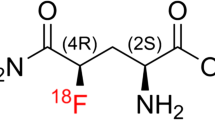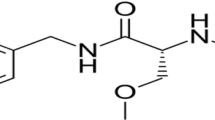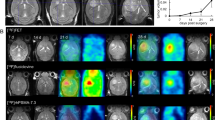Abstract
Levels of rhodamine 123 (Rh-123), a new antineoplastic drug, were measured using high performance liquid chromatography in normal brain, malignant glioma and brain adjacent to tumor after a single intravenous injection of drug into rats with intracerebral tumors. Consistently higher levels of Rh-123 were seen in tumor compared to normal brain at all times. Tumor levels of Rh-123 increased up to a maximum level of 9.35 nm/mg at 5 hours after intravenous injection (10 mg/kg), afterwhich Rh-123 levels slowly decreased. Rh-123 concentration in serum reached a maximum level immediately after intravenous injection and Rh-123 was eliminated from the serum according to first order kinetics. The delayed (5 hours after injection) increase in tumor concentration of Rh-123 may reflect tumor hypoperfusion and/or the time required for the compound to diffuse from the blood to the cells within the tumor due to the blood brain barrier. These findings have directed us to study low dose continuous infusion and direct intratumoral injection of Rh-123 as ways of achieving higher Rh-123 levels in tumor with less risk of systemic toxicity due to elevated serum Rh-123 levels.
Similar content being viewed by others
References
Johnson LU, Walsh ML, Chen LB: Localization of mitochondria in living cells with rhodamine 123. Proc Natl Acad Sci USA 77:990–994, 1980
Summerhayes IC, Lampidis TJ, Bernal SD, et al.: Unusual retention of rhodamine 123 by mitochondria in muscle and carcinoma cells. Proc Natl Acad Sci USA 79:5292–5296, 1982
Lampidis TJ, Salet C, Moreno G, et al.: Effects of the mitochondrial probe rhodamine 123 and related analogs on the function and viability of pulsating myocardial cells in culture. Agents Actions 14:751–757, 1984
Lampidis TJ, Bernal SD, Summerhayes IC, et al.: Selective toxicity of rhodamine 123 in carcinoma cells in vitro. Cancer Res 43:716–720, 1983
Bernal SD, Lampidis TJ, Summerhayes IC, et al.: Rhodamine 123 selectively reduces clonal growth of carcinoma cells in vitro. Science 218:1117–1119, 1982
Bernal SD, Lampidis TJ, Mclsaac RM, Chen LB: Anticarcinoma activity in vivo of rhodamine 123, a mitochondrial-specific dye. Science 222:169–172, 1983
Powers SK, Pribil S, Gillespie GY, Watkins PJ: Laser photochemotherapy of rhodamine 123 sensitized human glioma cells in vitro. J Neurosurgery 64:918–923, 1986
Powers SK, Beckman WC, Brown JT, Kolpack L: Interstitial laser photochemotherapy of rhodamine-123 sensitized rat glioma. J of Neurosurgery 67:889–894, 1987
Beckman WC, Powers SK, Brown JT, Gillespie GY, Bigner DD, Camps JL: Differential retention of rhodamine 123 by avian sarcoma virus-induced glioma and normal brain tissue of the rat in vivo. Cancer 59:266–270, 1987
Author information
Authors and Affiliations
Rights and permissions
About this article
Cite this article
Powers, S.K., Ellington, K. Selective retention of rhodamine-123 by malignant glioma in the rat. J Neuro-Oncol 6, 343–347 (1988). https://doi.org/10.1007/BF00177430
Issue Date:
DOI: https://doi.org/10.1007/BF00177430




